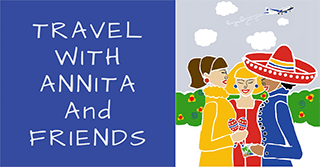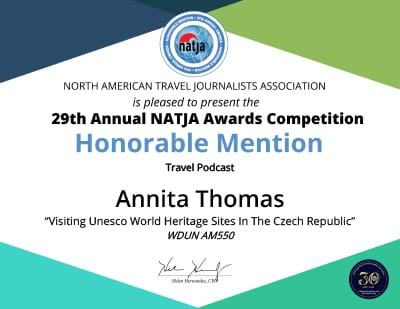1. How much time do I need for connecting flights?
- This can depend, based on the airlines, airport and if you are switching airlines (airlines may be in different concourses – some may require taking a train (such as Atlanta) to go between and change concourses, where you are seated in the airplane (if you are seated in the mid-to back of the airplane you will take longer to get off and need more minutes for your connection), time of the year (winter you will want to allow more time in case of weather delays)
- 30-45 minutes for domestic flights is a standard
- 1-½ hours – 2 hours for international flights – remember you have customs and immigrations to clear and large airports may require lots of walking between arrival gate and customs.
- Most airlines start boarding no later than 20 mins before departure. Some board as early as 30 mins before.
- Best advice – ask questions of your travel agent. If booking on-line go to the airline’s website and take a look at the airport map(s). You can get a general idea of airport layout – if you will need to move between concourses, etc., this is good information to know ahead of time.
2. What’s the best seat on the airplane?
That almost sounds like a trick question – the best seat is really your preference. Of course we would all like a first class seat that reclines into a bed, with a privacy wall.
- Seat choice is personal – some people like window seats while others like an aisle.
- Window and exit door seats can be very cold – bring along a travel blanket – many airlines do not offer blankets. Especially important if traveling with a child, older family member or someone who has limited mobility.
- Preferred seats include:
- Bulkhead seats
- Aisle seats closer to the front of the airplane
- Window seats closer to the front of the airplane
- Emergency exit row seats
- On some airplanes there are seats near the exit doors and emergency exit windows where there is no seat in front of you. They offer extra legroom and opportunities to stretch, but no place for you to stow a bag. Same is true for Bulkhead seats – no one reclines in front of you – but there is no where to place your carry on bags
- If you would like one of the preferred seats – with fees options depending on flights and destinations – select your seat when you purchase your ticket.
- If available you can also purchase a preferred seat during check-in
- Passengers with disabilities are usually seated in the front area – when traveling in economy – easy on & off.
- Passengers with disabilities & children are boarded first, but may disembark last.
- Children traveling require: A parent, legal guardian or someone who is at least 18 years old, traveling in the same cabin.
- Children under the age of two – it is recommended you purchase a seat on the aircraft and use an approved child safety seat, but you may hold an infant (up to 2 years old)
- Traveling with a child seat – you can not select aisle seats, emergency exit rows, a seat one row forward or back from an emergency exit row, flat bed seats (because the airbag seat belt cannot be deactivated)
- Best tip – select seats early and most definitely when booking your travel when traveling with a family. This ensures a better chance to sit together.
- Empty flights? – you are more likely to get a row of seats to sleep in the rear of the airplane – most people want to sit near the front to get off right away
- Seats in the center of the airplane – turbulence is less
3. Choose an early flight
- More likely to avoid delays
- Weather delays have not started any rolling delays with flights arriving late or cancellations
- Especially important in the winter months when weather can play a big part in on-time arrivals and departures
- Tip – For connecting flights – earlier in the day is always better – if there is a problem –there are more flights available for you to switch to.
4. Copy your travel documents
- No one plans to loose important documents like a passport or drivers license, but it happens. Having a copy makes replacements easier and quicker.
- Leaving your itinerary with family and friends is a good idea to ease the “where are they now” nerves, but also in case something happens, someone knows where you were headed and a general idea of times, locations and addresses
- This is one of those tips that you hope will never happen, but you still follow it
- Keep an extra copy with you too
5. Ease Through TSA
- If you are lucky and chosen for T.S.A. PreCheck you are sailing through security – no need to take electronics out of your bag, you keep your shoes on and you do not need to take your 3-1-1 items out (3 oz. liquids in a one-quart bag – one per person)
- Check your boarding pass to see if you were chosen – the agents may not always tell you – and you will find out once you’ve stood in line to go through the regular TSA line
- For those of us not skipping line with Pre-Check – have electronics in an outer pocket or spot where it is easy to get it out and place in a separate bin
- Have toiletries ready (your 3-1-1 bag)
- Tips – Double check your bag when packing to make sure you do not have any restricted items:
- Liquid items larger than 3 oz.
- Cutlery (dinner knives) scissors, box cutters (we can forget or not think about it around Christmas – presents and gift wrapping is on our minds)
- Bring slipper soaks to keep your feet clean in case you need to take off your shoes
6. When is the best time to book flights
This is never an easy question.
- It was once easy to answer when most airlines published their sales and deals on Wednesday morning (actually Tuesday nights at mid-night) but things are getting more difficult to predict
- Airfare watchdog is a great website to bookmark – airfarewatchdog.com they can alert you of upcoming deals.
- Start checking fares as soon as you know your dates –
- Book early is the best advice
- If you can book 3 months out – you are getting a deal (domestic)
- (International start booking 5 months out)
- 45 days ahead is great
- 30 days is still good
- 14 days was once a good point, but many airlines are starting to flux between sales, deals and high fares on routes around 14 days – 10 days.
- After 7 days you are looking at high fares
- Days of the week you choose to travel can make a difference too:
- Mondays are busy – business travelers are on the road – same as Fridays
- Tuesdays, Wednesday and Saturdays are good days – fares will be less
- Fridays and Sundays are expensive so are Mondays
- Tips – Bigger airports can have cheaper airfares, check out connecting flights – they tend to be less expensive
- Shop for tickets separately – if there is one ticket left at a price of $250 but all other seats are $375, the system will automatically pull $375 for both tickets. When booking separately, be ready to book all tickets and select seats once you are confirmed – don’t wait on this one for selecting seats – the system will not know you are together.










0 Comments